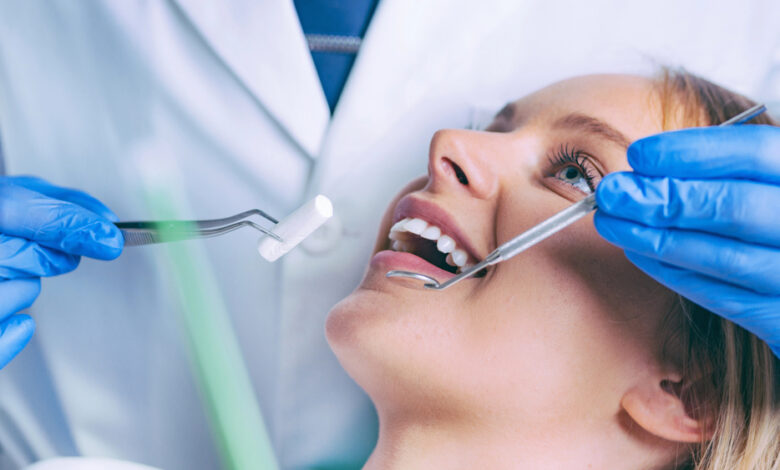THE EVOLUTION OF DENTAL CARE AND MODERN INNOVATIONS

INTRODUCTION:
Dental care has evolved significantly over the centuries, transitioning from rudimentary tools and techniques to sophisticated, technology-driven solutions. In ancient civilizations, people relied on natural remedies such as crushed shells and herbs to maintain oral hygiene. Over time, scientific advancements led to the development of modern dentistry, providing better treatment options and preventive care. The journey from basic oral care to high-tech dental procedures reflects the growing understanding of oral health and its connection to overall well-being.
Today, innovations in dentistry continue to revolutionize patient experiences, offering more effective, comfortable, and aesthetically pleasing solutions. Digital imaging, laser dentistry, and advanced orthodontics have made treatments more efficient and less invasive. The demand for better oral health solutions has driven research and technological progress, ensuring that modern dental care is more accessible, affordable, and patient-friendly than ever before.
THE EARLY HISTORY OF DENTAL CARE AND ORAL HYGIENE PRACTICES:
Dental care has been a crucial aspect of human health for thousands of years. Early civilizations used natural materials such as tree twigs, charcoal, and herbs to clean their teeth and freshen their breath. Some of the earliest records of dental treatment date back to ancient Egypt, where evidence suggests that rudimentary tools were used to extract teeth and treat dental infections.
The development of early dentistry expanded in ancient Greece and Rome, where philosophers and medical practitioners explored different techniques for treating dental problems. Hippocrates and Aristotle documented methods for dealing with tooth decay, while the Romans introduced the concept of dental prosthetics using materials like bone and ivory. These early practices laid the foundation for modern dental care, demonstrating humanity’s long-standing concern for oral health.
See also: Supply6 360 Health Powder for Men and Women with Superfoods
THE INTRODUCTION OF MODERN DENTAL TOOLS AND TECHNIQUES:
The 18th and 19th centuries marked a turning point in dental care, with the invention of advanced tools and techniques that made treatments more effective. Innovations such as dental drills, porcelain crowns, and anesthesia significantly improved the patient experience. During this period, dentistry became a recognized profession, leading to the establishment of formal dental education and specialized practices.
The discovery of anesthesia was particularly revolutionary, allowing dentists to perform complex procedures without causing extreme discomfort. Innovations such as amalgam fillings and dental prosthetics provided better solutions for treating cavities and tooth loss. These advancements contributed to the growing acceptance of professional dental care, setting the stage for modern dentistry as a well-respected medical field.
THE RISE OF ORTHODONTICS AND COSMETIC DENTISTRY:
As dental technology continued to evolve, orthodontics and cosmetic dentistry emerged as specialized fields aimed at improving both function and aesthetics. Traditional metal braces were introduced in the 20th century, providing a structured method for correcting misaligned teeth and bite issues. Over time, orthodontic treatments became more advanced, offering patients more discreet and comfortable options.
Today, innovations in orthodontics include clear aligners, ceramic braces, and lingual braces, which provide effective teeth-straightening solutions with improved aesthetics. Many patients opt for a brace for teeth to achieve a well-aligned smile and better oral health. Treatments have made it easier for individuals to correct misalignment issues without the discomfort associated with traditional metal braces. With the rise of cosmetic dentistry, procedures such as teeth whitening, dental veneers, and gum contouring have gained popularity, allowing people to enhance the appearance of their smiles effortlessly.
THE ROLE OF PREVENTIVE CARE IN MODERN DENTISTRY:
Preventive care has become a major focus in modern dentistry, helping individuals avoid serious dental issues before they develop. Routine check-ups, professional cleanings, and fluoride treatments are essential in maintaining oral health and preventing common problems like cavities and gum disease.
Dentists now emphasize patient education, encouraging better oral hygiene habits such as regular brushing, flossing, and a balanced diet. With preventive strategies, individuals can reduce the need for invasive procedures, saving both time and money while ensuring long-term dental health.
HOW NANOTECHNOLOGY IS REVOLUTIONIZING DENTAL CARE:
Nanotechnology is playing an increasingly important role in improving dental materials and treatment outcomes. This emerging field is being used to develop stronger, more durable fillings, crowns, and implants that mimic the natural properties of teeth.
One of the most promising applications of nanotechnology in dentistry is the creation of antibacterial coatings for dental restorations. These coatings help prevent bacterial buildup, reducing the risk of infections and decay. As research progresses, nanotechnology is expected to enhance everything from tooth regeneration to more effective pain management in dental procedures.
THE IMPORTANCE OF HOLISTIC DENTISTRY AND INTEGRATIVE ORAL HEALTH:
Holistic dentistry focuses on the connection between oral health and overall well-being. Unlike traditional dentistry, which primarily addresses individual dental issues, holistic approaches consider factors such as nutrition, lifestyle, and mental health in dental treatment plans.
Many holistic dentists recommend natural, biocompatible materials for fillings and restorations, as well as alternative pain management methods such as acupuncture and herbal remedies. By addressing oral health as part of a larger wellness strategy, holistic dentistry aims to provide a more comprehensive approach to patient care.
THE IMPACT OF DIGITAL TECHNOLOGY ON DENTAL CARE:
Advancements in digital technology have revolutionized dentistry, making procedures more precise, efficient, and less invasive. Digital imaging and computer-aided design (CAD) have transformed the way dentists diagnose and treat oral health issues.
Some key innovations include:
- 3D scanning and printing: Custom dental restorations such as crowns, bridges, and dentures can now be designed and manufactured with precision using 3D printing technology.
- Laser dentistry: Laser technology is used for gum treatments, cavity removal, and teeth whitening, reducing discomfort and healing time.
- Teledentistry: Virtual consultations allow patients to receive professional dental advice without visiting a clinic, increasing accessibility for those in remote areas.
The integration of digital tools in dentistry continues to enhance treatment outcomes, ensuring that procedures are more comfortable and effective for patients.
THE FUTURE OF PAINLESS AND NON-INVASIVE DENTAL TREATMENTS:
The future of dentistry is focused on making treatments as painless and non-invasive as possible. New materials, technologies, and treatment approaches are being developed to ensure that dental care is more patient-friendly.
- Regenerative dentistry: Researchers are exploring ways to regenerate damaged tooth enamel and dentin naturally, reducing the need for fillings.
- Biocompatible materials: Advances in dental materials are leading to the development of stronger, more durable, and non-toxic alternatives for fillings, crowns, and implants.
- AI-driven diagnostics: Artificial intelligence is being used to analyze dental X-rays and predict oral health issues before they become severe, enabling early intervention.
As these innovations continue to shape the future of dentistry, patients can expect a more comfortable and efficient dental care experience.
CONCLUSION:
The evolution of dental care has been driven by continuous advancements in science and technology, making treatments more effective, less painful, and aesthetically pleasing. From ancient oral hygiene practices to cutting-edge digital innovations, dentistry has undergone a remarkable transformation. Today, orthodontics, cosmetic dentistry, and minimally invasive procedures are making it easier for people to achieve healthy and beautiful smiles.
As technology continues to improve, the future of dental care promises even greater innovations, including regenerative treatments, AI-driven diagnostics, and more personalized care options. By embracing modern advancements, the dental industry is ensuring that oral health remains a top priority, providing individuals with better solutions for maintaining strong and confident smiles.




